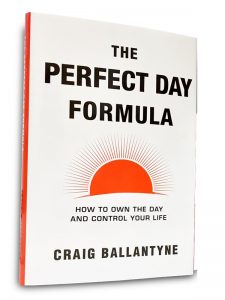This Is How You Build A Lasting Legacy

We spend a lot of time worrying about numbers, don’t we?
Revenue. Sales figures. Profits. Losses. Expenditures. Overhead. We’ve even derived a happiness quotient for the workplace—surveys that put a one-to-five number (often veiled in a better-worse scale) on workplace satisfaction.
But whether we’re the public-facing CEO of a business or an employee wedged in its hierarchy, a nagging question remains after we’ve digested our beloved numbers: At the end of a 30 or 40-year career, what do we want our legacy to be? Numbers—however impressive—just don’t seem to cut it.
For chaos-as-the-norm TV producer Shonda Rimes, revelations about family turned the wheel away from Nielsen ratings and toward home life and the nurturing of opportunities for family. For the anonymous financial analyst I recently met at a bar, the only legacy that mattered was leaving behind money for his kids. For modern-day CEOs, unwavering personal ethics have taken the pedestal as the critical core of one’s desired legacy (at least according to surveyor Price Waterhouse Cooper). It’s no longer enough to appease shareholders and board members; CEOs want to know they’ve acted with integrity, according to unfaltering personal and professional values.
All of these point to something bigger than oneself; a legacy isn’t a legacy unless it feeds the generations that follow us. HuffPost writer Katherine Meadowcroft puts a finer point on it:
A legacy should be deeply considered. It takes on immortality, and it is how we live on after death. If we think of our legacy as a gift, it places an emphasis on the thoughtful, meaningful, and intentional aspects of legacy. The consequences of what we do now will outlive us.
What one leaves behind is the quality of one’s life, the summation of the choices and actions one makes in this life, our spiritual and moral values.
But these weighty considerations are not due at career’s end. To the contrary, while most professionals get caught up in the day-to-day, they should be framing their work and life around their desired legacy NOW.
Stephen Howard of The Guardian shares his personal experience with this very issue:
Business leaders are at the heart of ensuring that sustainability is embedded within a company’s culture and throughout the organization and that business plays its rightful role as a lasting force for change in society. However, the average length of service of a chief executive is [seldom] more than five or six years. The truth is modern chief executives have a relatively short time to make an impact and create transformational change within a business. That is why considering a long-term legacy should be at the forefront of how modern business leaders operate.
Some may argue that the career itself is the foundation of legacy. Elon Musk, for instance, grounds each of his companies with the principle of community growth and sustainability. Even Google—that monolithic sometimes-bully of the tech world—has envisioned a world where everyone has ready access to Internet and, by extension, each other.
But most of us don’t sit atop towers of innovation and cash, and are therefore less likely to move mountains in a lifetime. Still, the question of legacy is important. Over the course of an entire career, our impact on thousands—maybe millions—of individuals will ultimately shape the world in which we live. Doubt it? Andioma founder Anna Vital crunched the numbers on this, and they are impressive—enough to convince us that a legacy is worth building. Who would have thought we could touch almost two million lives with a bit of focus, vision, and determination?
The question, then, is not if you should work on a legacy, but how. What does an active legacy-building life look like?
Here are a few thoughts to get you started:
Know your values.
This may seem to be a given, but if someone were to ask you flat out what your life’s guiding values are, how would you answer? Could you? Do you know what the inviolable, non-negotiables are?
Be able to articulate these clearly. Write them down for yourself (here’s a guide) and make sure they are actionable. Avoid fluff here—no legacy was built on empty affirmations like “I want to be a better person.”
Oh, and revisit these yearly—at least. Lives change and (some) values change. That’s understandable. What’s most important is that they’re living and actionable.
Here’s an example: If you believe that life is made better through compassion, then endeavor to act on it daily. Know what actionable compassion looks like in situations of pain, happiness, quiet, and high energy. Know the temptations that draw you away from this value and put up barriers for protection.
Know your worth.
Meadowcraft, if you accept her definition of legacy, makes clear that the origin is always the self. And if the self has nothing to give—or is confused about what it has to give—then legacy-building is DOA.
Everyone has assets and virtues, from dollars in the bank to a passion for volunteerism. Before you start your grand journey of legacy-building, do a deep dive to determine what your assets and passions are. These, matched with your values, will help frame a daily life of legacy-building.
Know the need.
You know your values and you know what you have to offer. But a lasting legacy must carefully consider the needs of the community and the world. The question of legacy-building isn’t simply, “What do I want to give?” but “What can I give that the world needs?”
The world needs change. But there are underlying struggles and persistent problems that will always need to be addressed; most of them are woven into the human condition. Consider your nuclear world and influences carefully. What problems do you see that you can help assuage by sharing your gifts? And how can you do so on multiple levels? A simple monetary donation is nice, but people don’t remember dollars as well as they do personality and kindness. How can you weave both into your legacy? What message are you incorporating into your lasting gift?
#
At the heart of this legacy-building is a simple commandment: Know thyself. How? Spend time each and every day in self-reflection. Meditate. Pray. Relish 15 minutes with nothing but your own thoughts.
When you do, these words of Jim Rohn will ring true:
All good men and women must take responsibility to create legacies that will take the next generation to a level we could only imagine.
With these words at your back, legacy-building can begin. The first question: How will you define your values, your worth, and global need so that you can leave this world better than you found it?
Whatever your answer, start legacy-building today. Tomorrow is too late.
 There are many tools and techniques to help you build a life that will improve the lives of future generations. When you create your Perfect Day, grounded in solid values and vision, you set an example for all who come after you.
There are many tools and techniques to help you build a life that will improve the lives of future generations. When you create your Perfect Day, grounded in solid values and vision, you set an example for all who come after you.
Learn how to build that Perfect Day by getting your own FREE copy of “The Perfect Day Formula.” It’s helped thousands find their compass, their purpose, and their “why.” Isn’t it time you found yours?
